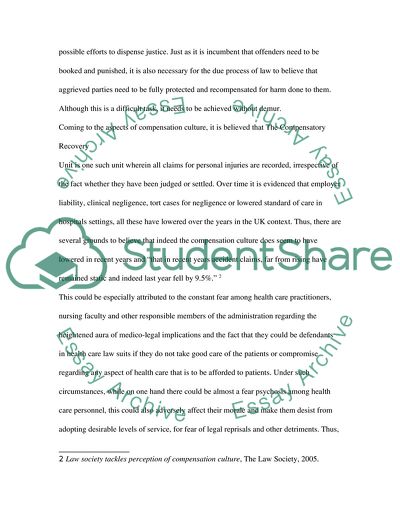Cite this document
(Issues on Compensation Culture in British Courts Assignment, n.d.)
Issues on Compensation Culture in British Courts Assignment. https://studentshare.org/law/1564672-consider-the-extent-to-which-a-compensation-culture-exists-in-britain-and-using-case-law-and-statutory-provisions-evaluate-the-approach-of-the-courts-in-deciding-whether-the-imposition-of-liability-might-be-adverse-to-the-public-interest-by-preventing
Issues on Compensation Culture in British Courts Assignment. https://studentshare.org/law/1564672-consider-the-extent-to-which-a-compensation-culture-exists-in-britain-and-using-case-law-and-statutory-provisions-evaluate-the-approach-of-the-courts-in-deciding-whether-the-imposition-of-liability-might-be-adverse-to-the-public-interest-by-preventing
(Issues on Compensation Culture in British Courts Assignment)
Issues on Compensation Culture in British Courts Assignment. https://studentshare.org/law/1564672-consider-the-extent-to-which-a-compensation-culture-exists-in-britain-and-using-case-law-and-statutory-provisions-evaluate-the-approach-of-the-courts-in-deciding-whether-the-imposition-of-liability-might-be-adverse-to-the-public-interest-by-preventing.
Issues on Compensation Culture in British Courts Assignment. https://studentshare.org/law/1564672-consider-the-extent-to-which-a-compensation-culture-exists-in-britain-and-using-case-law-and-statutory-provisions-evaluate-the-approach-of-the-courts-in-deciding-whether-the-imposition-of-liability-might-be-adverse-to-the-public-interest-by-preventing.
“Issues on Compensation Culture in British Courts Assignment”. https://studentshare.org/law/1564672-consider-the-extent-to-which-a-compensation-culture-exists-in-britain-and-using-case-law-and-statutory-provisions-evaluate-the-approach-of-the-courts-in-deciding-whether-the-imposition-of-liability-might-be-adverse-to-the-public-interest-by-preventing.


